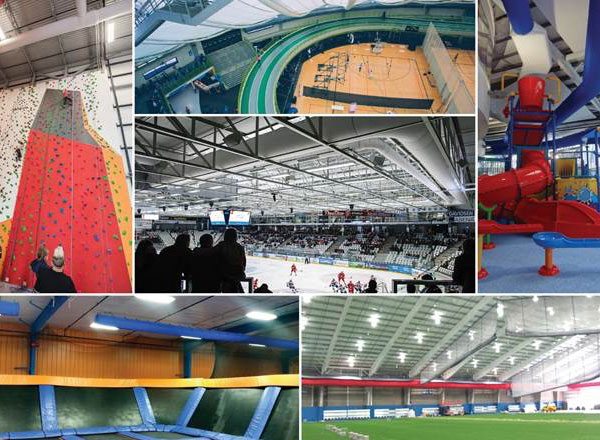The ventilation solution for indoor sports facilities needs to adhere to special requirements, as the climate changes constantly depending on what activities are going on inside the facility. Moreover, moisture and odours from athletes and spectators affect the air as well. Therefore, it is important that the ventilation solution is designed to handle these changes in humidity, temperature, etc. without creating discomfort for the people using the facility. Sports facilities cover a number of different application types, each requiring its own unique solution. Each application requires a thorough assessment of the important parameters, such as room dimensions, the primary purpose of the air, the risk of corrosion, special temperature requirements, elements affecting the induction patterns and so on. Thus, sports facilities also place great demands on the flexibility of the solution. The best suited dispersion technology for sports facilities is therefore fabric ducting. It is the solution that offers the greatest design flexibility while eliminating the risk of condensation and corrosion. Textile channel systems are designed for the specific application. This means that flow models and dispersion patterns can be completely adapted to the individual needs. The design flexibility covers all elements, such as the duct profile, type of fabric and its permeability, flow models and flow patterns, as well as the suspension method. The system is tailor-made and arrives ready for installation, in typically less than two weeks from the order is released for production. The textile channels are also distinguished by weighing far less than conventional metal solutions. Therefore, they are suitable for retrofitting in existing buildings. They weigh as little as 300g / m2 despite the fact that they provide a much better air distribution than the other technologies on the market. They can therefore easily be retrofitted in older sports facilities. Since the very beginning in 1973, even air distribution, no drafts and no condensation have been at the heart of FabricAir’s innovative technology. This is why technology quickly spread across application types and national borders. More than 40% of all countries in the world today use this fabric-based air dispersion technology because comfort, design freedom and other important features, such as condensation-free, are essential parameters in choosing the ideal ventilation solution for sports facilities.






